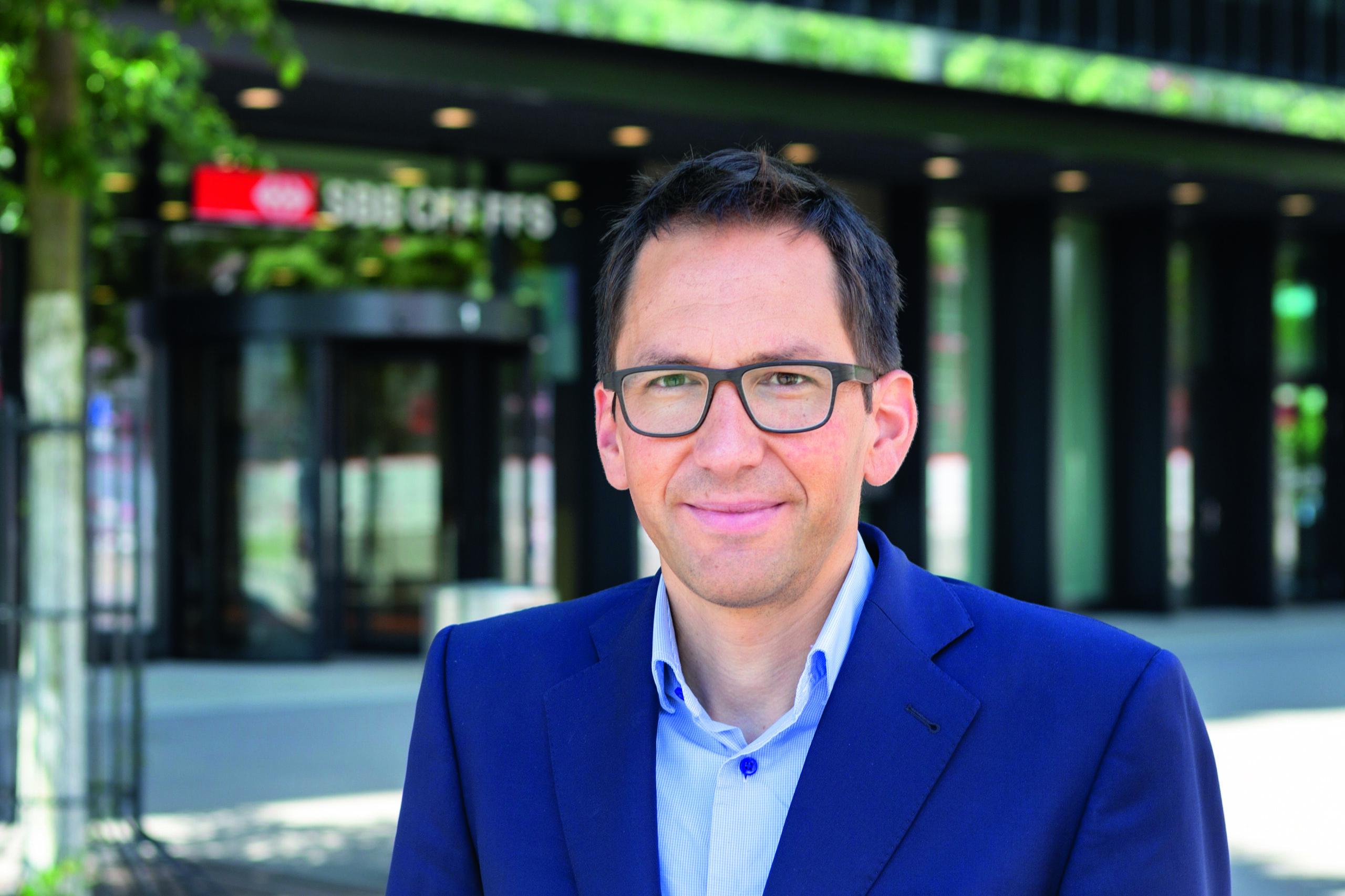All industry participants must be ready for change

The SBB are currently testing Building Information Modeling (BIM) in almost two dozen pilot projects. Andreas Brunner, member of the SBB Infrastructure Management, is convinced: For the successful use of BIM, the way of thinking and working methods will have to change further.
What exactly is Building Information Modeling?
Literally translated, BIM means building information modeling – that's a pretty good idea. With BIM, one is able to determine and further use the data necessary for operation in addition to the digital planning and execution of projects. You work with three-dimensional models that are nothing more than visually represented databases. That sounds complicated now, but it's not at all, it's just a new way of working. We used to have two-dimensional plans, now we have three-dimensional digital building models. It is important that everyone involved can access the same data, in new German: Single Source of Truth. You can therefore be sure that the data stored in databases is not only up-to-date, but also correct and of course relevant for further processing. This is where the greatest benefit lies.
Why did the SBB decide to use BIM for construction projects?
We see clear potential here in data processing and in the entire value creation process. The SBB anticipate a sustained reduction in capital-bound expenses for planning, realizing and managing real estate. Of course, this also applies to the entire railway infrastructure owned by SBB.
We can also work very strongly towards reducing CO2, as we can, for example, use the data to simulate how operations will develop over the next 20, 25 and more years. You can also compare projects with each other and thus learn from other projects. This is how we create transparency over the entire life cycle.
How is BIM actually used in the construction of the Letziturm project?
The Letziturm was one of the first building construction projects by SBB Immobilien to be implemented using BIM-supported methods and working methods. It is also a learning project for the management phase. The planning and implementation of such a project will be completed in ten years, but we will manage the building at least four times longer. For example, we will use the knowledge gained from the Letziturm to carry out material samples. We are in the process of implementing plan approvals via the collaboration platforms. We have learned a lot about what we can use to optimize planning and implementation – and we see this as an important first step.
"You can no longer do it alone as a client."
What is your current summary of the use of BIM?
We recognized the potential of BIM for SBB at an early stage and actively promoted development with the BIM @ SBB group program that was set up for this purpose. We have already made important progress in this way. The BIM @ SBB program is based on four pillars that are mutually dependent: development, testing, standardization and the specific take-away of the industry. We share all of our knowledge and experience with our partners at events and receive inputs from the market that we specifically incorporate into the development. We involve our community. It is no longer possible to work alone as a client, it takes a strong, mutual cooperation. This is also reflected in the skills of the employees. We feel that the employees are very interested, they want to learn from one another together. It's incredibly exciting and instructive for everyone involved
What are the advantages?
Of course, a now data-driven implementation changes the way in which we work with our partners and develop the projects in close cooperation. In fact, projects are processed faster and more securely if everyone involved is also involved. The already mentioned “Single Source of Truth” is another advantage. The system data is stored in a structured manner, can be found quickly and is always up-to-date. Lengthy searches and verification of the data are largely eliminated. Communication is more targeted than before and is benefit-oriented. Project teams can find solutions much faster, can view problems and pending issues directly on the three-dimensional model and work out variants and alternatives together. That helps for mutual understanding.
Are there any disadvantages?
BIM is often only associated with the technology aspect. Of course, it's nice to hover over the construction site in a Hololens. But if the underlying data is not correct, the most modern technology is of no use. Data has to be correct, a new way of working with precision is required. There are only two states of data: correct or not. Not everyone in the value chain is ready to use new technologies and methods. Everyone in the industry must be ready to change and do their part to make it happen.
What could be the reasons that BIM has not yet caught on in Switzerland?
Many associate BIM with the use of the latest software or the latest database technology. Often this is necessary, but not yet sufficient. To be successful, our way of thinking and working methods will have to change further. In the BIM environment, we often speak of collaborative project teams that develop solutions together. This process takes time, but the trend makes me positive. It is also up to us public clients to further promote this development and to require the use of BIM when awarding projects, as we did with the Letziturms project.
What are SBB's goals for the use of BIM?
We currently have almost two dozen pilot projects that we provide with the basics and try out a wide variety of methods, technologies and techniques. The knowledge gained from this flows into the development. International principles are also taken into account by means of normalization and standardization. In this way we can ensure that we have our finger on the pulse. This knowledge is given back to the industry in a targeted manner. From 2021, the use of BIM will be mandatory for state-related companies in building construction, according to the federal digital strategy, and from 2025 for the infrastructure, as much more has to be worked out here. That is our stated goal.
SBB BIM project Letziturm:
Between the train stations in Zurich Altstetten and Hardbrücke, a new urban area is developing along the track area due to the restructuring of existing commercial and industrial areas. The Letziturm as a six-storey building base takes up the edge of the listed warehouse in the east. He thus defines a first urban horizon. The two residential towers are based on the building height of Letzibach D. The planned single tower will thus create an ensemble of three tall buildings.
Construction started this year. The 178 residential units, consisting of 1.5 room to 7.5 room apartments, should be ready for occupancy from autumn 2022. The ground floor is characterized by the two main entrances and the two commercial rooms, each of which is oriented towards the future square and towards the SBB workshops. Between them are the ground floors of four larger, two-story studio units that combine work and living and, if desired, connect directly to the public space.
Both the small and the larger residential units are housed in the base building. 2.5 to 4.5 room apartments are planned above the 7th floor, which has a common room
The facts
Armon Semadeni,
Architect GmbH, Zurich.
Realization: 2017-2022
Dates: Planned start of construction: autumn 2020
Client: SBB Immobilien, Development Zurich
Program: 157 apartments, residential studios and commercial spaces
Cost: CHF 75 million
